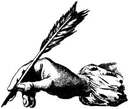 By M.P. Pellicer | Stranger Than Fiction Stories Several graves of British royalty dating back to the dark ages have been found. Originally they were overlooked because they were not lavish enough, and had no grave goods inside.  Ruin of Tintagel fortress off the coast of Cornwall Ruin of Tintagel fortress off the coast of Cornwall Julius Caesar invaded southern Britain in 54 B.C. The Romans ended their rule in 410 A.D. This is when the Arthurian legends sprung. After the exodus of the Roman legions, the British continued to rule in parts of Scotland, Wales and western England. The Angles, Saxons and Jutes invaded and settled in the east. In March 2022, it was reported that up to 65 graves of British kings and their families were identified in approximately 20 sites across Wales and west England. These 65 burials were found by archaeologists across England over several decades, but because of their simplicity were not believed to be those of royalty. According to Ken Dark, professor of archaeology and history at the University of Reading, the Christian British opted for a simple burial, versus the Anglo-Saxon who were pagan and buried their royalty with pomp and grave goods. The British buried their royals next to common Christians without stone inscriptions to identify them.  Arthur meets the Lady of the Lake who gives him the sword Excalibur Arthur meets the Lady of the Lake who gives him the sword Excalibur According to Dark, he believes a real person named Arthur did exist, since the name of "Arthur" became popular among British and Irish royal families at the time. Only one British king who ruled during early medieval years has been unearthed in the northwest of Wales. An inscription on the gravestone identified him as Catamanus (Cadfan) with the word "rex", which is Latin for king. However it appears that his grave was commemorated because he became a monk. In contrast nine graves of Anglo-Saxon kings have been found.  Prow of the ship at Sutton Hoo, with Lieutenant Commander Hutchison (left) and Charles Phillips (right) seated just beyond the burial chamber region and Basil Brown standing. (Source - Mercie Keer Lack ARPS) Prow of the ship at Sutton Hoo, with Lieutenant Commander Hutchison (left) and Charles Phillips (right) seated just beyond the burial chamber region and Basil Brown standing. (Source - Mercie Keer Lack ARPS) In 1939, an Anglo-Saxon ship burial was discovered at Sutton Hoo in east England. There were about 18 burial mounds dating to the 7th century A.D. They were looted centuries before. The largest mound contained an undisturbed site that contained an 89-foot-ship made of oak, as well as objects crafted from gold, garnet and silver, including a sword and armor. There is no certainty as to who was buried there, but it's believed Raedwald who ruled East Anglia during the 7th century is a good possibility. This type of burial was rare and reserved only for those of very high status. This was because of the manpower demanded to build a ship and drag it from the river, and build a structure to encase it. The site was closed on August 25, 1939, when Britain declared war on Germany on September, 3.  An excavated 'enclosed grave', a possible royal burial, at Plas Gogerddan, Wales (Ken Murphy/Dyfed Archaeological Trust) An excavated 'enclosed grave', a possible royal burial, at Plas Gogerddan, Wales (Ken Murphy/Dyfed Archaeological Trust) According to Dark's studies, British royalty from this era were placed inside Christian cemeteries, and though they were marked as a person of importance, compared to the pagan graves they were very plain. None were marked with inscribed stones. At Tintagel a fortified peninsula off the coast of Cornwall, long associated with Arthur, there are thought to be five British royal graves. Inside a Christian cemetery they are covered by a mound of earth (known as "ferta") possibly because they were Irish royal graves. The British had strong ties to Celtic Ireland since they were of Celtic origin and had similar languages. “Before this work, we were completely unaware of the large number of probable royal graves surviving from post-Roman western Britain. Ongoing investigations are likely to help change our understanding of important aspects of this crucial period of British history,” said Professor Dark.  The Death of King Arthur by James Archer The Death of King Arthur by James Archer There is still debate as to whether King Arthur was an actual historic figure. Some theorize he was a leader named Arturus who fought with the Celtic Britons against the Anglo-Saxons in the 5th century. However there is no reliable historical reference for this person, but some believe this was not his name but a title which means Bear. The Saxons did overcome the Celts, but they remained strong in Cornwall, Cumberland and Wales. It was among these people that the legend of their champion Arturus was kept alive. Bards would travel from court to court retelling the folk tales of Arturus. The military leader eventually became King Arthur of England.  King Arthur on a boat with Merlin going to retrieve the sword c.1881 King Arthur on a boat with Merlin going to retrieve the sword c.1881 Others believe Arthur was Dux (Duke) of Britain which was a Roman title, but by 500 A.D. "King" was the customary designation of a Celtic leader. Ancient records sometimes offer hints that Arthur was possibly a warrior, who died in the mysterious Battle of Camlann in 537 A.D. His father may have been Ambrosius Aurelianus, who was a Duke of Britain. The 40 years between the reign of Ambrosius and Arthur's death were filled with struggles and shifting fortunes. The modern story of King Arthur is drawn mostly from Sir Thomas Malory's, The Death of Arthur (Le Morte d'Arthur) printed in 1485. His narrative is based on the many tales told by word of mouth and then written down throughout the years, however he based Arthur as a 15th century champion. In 2024, a hunt for Excalibur, King Arthur's sword was initiated. The search will be part of a new TV series titled Weird Britain. In Cornwall, Dozmary Pool which sits on the edge of Bodmin Moor will be searched. This is the lake which is believed to be where King Arthur received and returned Excalibur to the Lady in the Lake.
0 Comments
Your comment will be posted after it is approved.
Leave a Reply. |
Stranger Than Fiction StoriesM.P. PellicerAuthor, Narrator and Producer Archives
July 2024
Categories
All
|
Stories of the Supernatural
- Stories of the Supernatural
- Miami Ghost Chronicles
- M.P. Pellicer | Author
- Stranger Than Fiction Stories
- Eerie News
- Supernatural Storytime
-
Astrology Today
- Tarot
- Horoscope
- Zodiac
-
Haunted Places
- Animal Hauntings
- Belleview Biltmore Hotel
- Bobby Mackey's Honky Tonk
- Brookdale Lodge
- Chacachacare Island
- Coral Castle
- Drayton Hall Plantation
- Jonathan Dickinson State Park
- Kreischer Mansion
- Miami Biltmore Hotel
- Miami Forgotten Properties
- Myrtles Plantation
- Pinewood Cemetery
- Rolling Hills Asylum
- St. Ann's Retreat
- Stranahan Cromartie House
- The Devil Tree
- Trans-Allegheny Lunatic Asylum
- West Virginia Penitentiary
- Paranormal Podcasts
"When misguided public opinion honors what is despicable and despises what is honorable, punishes virtue and rewards vice, encourages what is harmful and discourages what is useful, applauds falsehood and smothers truth under indifference or insult, a nation turns its back on progress and can be restored only by the terrible lessons of catastrophe."
- Frederic Bastiat
- Frederic Bastiat

Copyright © 2009-2024 Eleventh Hour LLC. All Rights Reserved ®
DISCLAIMER
DISCLAIMER
 RSS Feed
RSS Feed
















